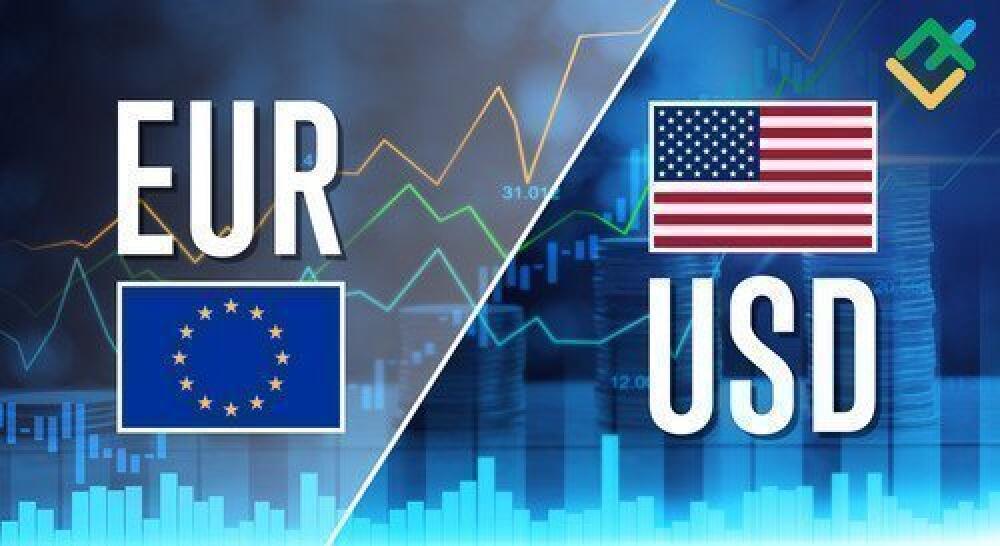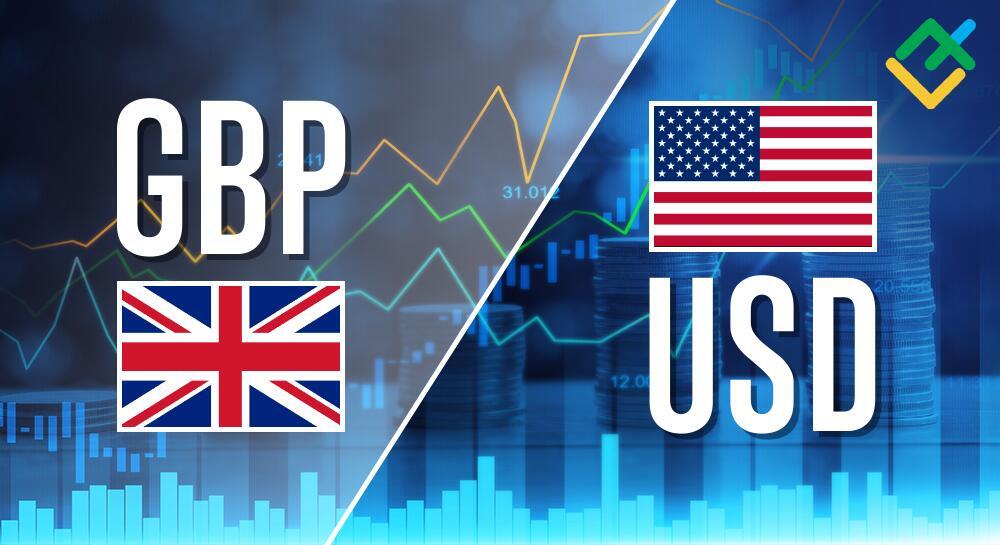[ad_1]
Review of the main events of the Forex economic calendar for the next trading week (10.07.2023 – 16.07.2023)
Market participants ignored the information about the decrease in unemployment in the US and another increase in wages in June. Buyers of the dollar were disappointed by the report of the US Department of Labor containing data on the number of new non-farm jobs created in June. The June NFPR came out with a value of +209 thousand new jobs, below the forecast of growth by +225.0 thousand. The May value was also revised down, to +306.0 thousand +339 thousand earlier. Now, with a further slowdown in the labor market and inflation (updated data on inflation in the US next Wednesday), it will be more difficult for the Fed officials to decide on further tightening of monetary conditions, which has a negative impact on the economy.
Next week, market participants will also study important macro statistics from China, the UK, Germany, the Eurozone and the results of the meetings of the RBNZ and the Bank of Canada.
* during the coming week, new events may be added to the calendar and / or some scheduled events may be cancelled.
** GMT time
Monday, July10
01:30 CNY Consumer Price Index (CPI)
The National Bureau of Statistics of China will present regular monthly data reflecting the dynamics of consumer prices in China. Rising consumer prices could trigger an acceleration in inflation, which could force the People’s Bank of China to take measures aimed at tightening fiscal policy. Strengthening in consumer inflation may cause the appreciation of the yuan, while a low result will put pressure on the yuan.
The Chinese economy, according to various estimates, is already the largest in the world, pushing the US economy to second place. Therefore, the publication of important macroeconomic indicators of this country has a significant impact on world financial markets, primarily on the positions of the yuan, other Asian currencies, the dollar, commodity currencies, as well as Chinese and Asian stock indices. China is the largest buyer of raw materials and a supplier of a wide range of finished products to the world commodity market.
In August 2022, the growth of the consumer inflation index amounted to -0.1% (+2.5% in annual terms), in September +0.3% (+2.8% in annual terms), in October +0.1% (+2.1% in annual terms), in November -0.2% (+1.6% in annual terms), in December 0% (+1.8% in annual terms), in January 2023 +0 .8% (+2.1% in annual terms), in February 2023 -0.5% (+1.0% in annual terms), in March -0.3% (+0.7% in annual terms ), in April -0.1% (+0.1% in annual terms), in May -0.2% (+0.2% in annual terms).
The growth of the consumer inflation index will have a positive impact on the quotes of the yuan, as well as commodity currencies. However, worse-than-expected data and the relative decline in the CPI may negatively affect them. To a greater extent, this applies to the Australian dollar, since China is Australia’s largest trade and economic partner.
20:00 GBP Speech by head of the Bank of England Andrew Bailey
Financial market participants are waiting Andrew Bailey to clarify the situation regarding the future policy of the UK central bank. During speeches by the head of the Bank of England, volatility usually rises sharply in the quotes of the pound and the FTSE London Stock Exchange index if it gives any hints of tightening or easing monetary policy of the Bank of England. Probably, Andrew Bailey will also give explanations regarding the decision taken by the Bank of England on the interest rate and touch upon the state and prospects of the British economy after Brexit against the backdrop of a sharp rise in energy prices and inflation. If Bailey does not touch on monetary policy issues, then the reaction to his speech will be weak.
Tuesday, July 11
06:00 GBP Report on the average wages of the British for the last 3 months. Unemployment rate
Every month, the Office for National Statistics (ONS) publishes a report on average wages including the period for the last 3 months, with and without bonuses.
This report is a key short-term indicator of the dynamics of changes in wages of employees in the UK. Wages growth is a positive factor for the GBP, while the low value of the indicator is negative. Forecast: The July report suggests that the average wages with bonuses rose again in the last calculated 3 months (March-May), after rising by +6.5%, +5.8%, +5.9%, +6 .0%, +6.5%, +6.%, +6.1%, +5.5%, +5.2%, +6.4%, +6.8%, +7.0% , +5.6%, +4.8%, +4.3%, +4.2% in previous periods); wages without bonuses also increased after growth of +7.2%, +6.7%, +6.6%, +6.6%, +6.7%, +6.5%, +6.1%, + 5.8%, +5.5%, +5.2%, +4.7%, +4.4%, +4.2%, +4.2%, +4.1%, +3, 8%, +3.7%, +3.8% in previous periods). Thus, the data points to the continued growth of wages, which is a positive factor for the pound. If the data turns out to be better than the forecast and / or previous values, the pound is likely to strengthen in the foreign exchange market. Data worse than forecast/previous values will have a negative impact on the pound.
Also at this time are published data on unemployment in the UK. It is expected that for 3 months (March-May) unemployment was at the level of 3.8% (against 3.8%, 3.9%, 3.8%, 3.7%, 3.7%, 3.7% , 3.7%, 3.6%, 3.5%, 3.6%, 3.8%, 3.8%, 3.8%, 3.7%, 3.8%, 3.9% , 4.1%, 4.2%, 4.3%, 4.5%, 4.6%, 4.7%, 4.8%, 4.7%, 4.8%, 4.9% , 5.0%, 5.1%, 5.0% in previous periods).
Since 2012, the UK unemployment rate has steadily declined (from 8.0% in September 2012). This is a positive factor for the pound, the rise in unemployment is a negative factor.
If the data from the UK labor market turns out to be worse than the forecast and / or the previous value, the pound will be under pressure.
In any case, at the time of publication of data from the British labor market is expected to increase volatility in the quotes of the pound and the London Stock Exchange.
06:00 EUR Harmonized Index of Consumer Prices (HICP) in Germany (final release)
This index is published by the EU Statistics Office and is calculated on the basis of a statistical method agreed between all EU countries. It is an indicator for assessing inflation and is used by the Governing Council of the ECB to assess the level of price stability. A positive result strengthens the EUR, while a negative result weakens it.
Previous indicator values: +6.3% in May, +7.6% in April, +7.8% in March, +9.3% in February, +9.2% in January, +9.6% in December, +11.3% in November, +11.6% in October, +10.9% in September, +8.8% in August, +8.5% in July, +8.2% in June, +8.7% in May, +7.8% in April, +7.6% in March, +5.5% in February, +5.1% in January 2022 (annualized). If the data for June is better than the previous values, the euro may strengthen in the short term. The growth of the indicator is a positive factor for the euro. The data suggests mounting inflationary pressures in Germany, which in turn is putting pressure on the ECB to tighten its monetary policy. Data worse than the previous value will have a negative impact on the euro.
Wednesday, July 12
02:00 NZD The Reserve Bank of New Zealand’s decision on the interest rate. Accompanying statement. RBNZ monetary policy statement
Slower economic growth (New Zealand GDP growth has slowed since the second half of 2018) and a weakening labor market, as well as an escalation of international trade wars and a worsening global economic outlook have forced the Reserve Bank of New Zealand to keep interest rates low for a long time. An additional and unforeseen risk to the global and New Zealand economies was the coronavirus epidemic.
However, following the results of the meetings held in October and November, the Reserve Bank of New Zealand (for the first time in 7 years) raised the key interest rate to 0.50%, and then to 0.75%. In February and April 2022, the interest rate was raised again to 1.5% to dampen inflation and contain rapidly rising home prices. The current RBNZ interest rate is 5.50%.
Earlier, the RBNZ said that the economy no longer needs the current level of monetary stimulus.
The RBNZ is expected to raise the interest rate again at this meeting, and may also speak in favor of a further increase in the interest rate at the next meetings. Market participants following the NZD quotes need to be prepared for a sharp increase in volatility during this period of time.
In the accompanying statement and comments, the RBNZ management will provide an explanation of the interest rate decision and comments on the economic conditions that contributed to the decision.
At this time, the volatility in the quotes of the New Zealand dollar may rise sharply.
Earlier, the RBNZ said that against the backdrop of “multiple uncertainties”, monetary policy “will remain loose for the foreseeable future” but “may be adjusted accordingly.”
03:10 AUD Speech by head of the RBA Philip Lowe
In his speech, Philip Lowe will assess the current situation in the Australian economy and point out the further plans of the monetary policy of the department.
Market participants would also like to hear Lowe’s views on the outlook for central bank policy. In his speech following the bank’s June 2022 meeting and the 50bp interest rate hike (up 0.85%), Philip Lowe warned Australians to be ready for a significant increase in interest rates by the end of this year.
“I say this because the midpoint of our inflation target is 2.5 percent, so the 2.5 percent inflation-adjusted interest rate is actually a zero interest rate, which is historically very low,” Lowe said.
In May 2023, the interest rate was raised again to 4.10%, and in June it was left at this level.
Any signals from him regarding changes in the RBA’s monetary policy plans will cause a sharp increase in volatility in the AUD and the Australian stock market. If he does not touch upon the topic of monetary policy, the market reaction to his speech will be weak.
12:30 USD Consumer Price Index (ex food and energy)
Core Consumer Price Index (Core CPI) determines the change in prices of a selected basket of goods and services over a given period and is a key indicator for assessing inflation and changing consumer preferences. Food and energy are excluded from this indicator for a more accurate estimate. A high result strengthens the US dollar, while a low result weakens it. In March 2022, the value of the indicator was +0.3% (+6.5% in annual terms), in April +0.6% (+6.2% in annual terms), in June +0.7% (+ 5.9% in annual terms), in September +0.6% (+6.6% in annual terms), +0.3% (+6.3% in annual terms) in October, +0.2% (+6.0% in annual terms) in November, +0.3% (+5.7% in annual terms) in December, +0.4% (+5.6% in annual terms) in January 2023 , +0.5% (+5.5% in annual terms) in February 2023, +0.4% (+5.6% YoY) in March, +0.4% (+5.5% in annual terms) in April, +0.4% (+5.5% in annual terms) in May, which indicates a slight decrease in the growth rate of consumer inflation after strong growth in the previous months of 2022. If the data turns out to be weaker than the forecast, then the dollar is likely to react with a short-term decline. Data better than the forecast will strengthen the dollar.
Forecast for June: +0.3%, which indicates continued inflationary pressure in the US economy, although the inflation rate is consistently slowing down.
14:00 CAD Bank of Canada’s interest rate decision. Accompanying statement from the Bank of Canada. Report of the Monetary Policy Committee
The Bank of Canada will decide on the interest rate. In March 2020, the bank cut the rate 3 times, bringing it to the level of 0.25% to mitigate the economic damage from the novel coronavirus pandemic.
In the accompanying statement, Canada’s central bank said the “decision is aimed at supporting the financial system, which plays a central role in lending to the economy, as well as laying the foundation that will allow the economy to return to normal.” The central bank’s press release also said that the spread of the coronavirus and the sharp drop in global oil prices are collectively putting severe pressure on Canadians and the Canadian economy.
In fact, quantitative easing and a significant reduction in the interest rate should contribute to the weakening of the national currency.
The negative effects of the coronavirus on the Canadian economy and the country’s labor market, as well as the weakness of the housing market, still put pressure on the Bank of Canada to maintain an easy monetary policy. However, following the results of the meetings held in 2022, the Bank of Canada decided to raise the interest rate (to 4.75% at the moment) and spoke in favor of its further increase. The Bank of Canada now expects GDP and consumer price index (CPI) growth to be stronger this year than previously expected. Bank officials also acknowledged that the uncertainty caused by Russia’s special military operation in Ukraine could dampen economic growth and fuel inflation.
It is not impossible that at the meeting on Wednesday the Bank of Canada will again raise the interest rate.
Tough tone of the Bank of Canada’s accompanying statement regarding rising inflation and prospects for further tightening of monetary policy will cause the strengthening of the Canadian dollar. If the Bank of Canada signals the need for loose monetary policy, the Canadian currency will decline.
15:00 CAD Press conference of the Bank of Canada
During the press conference, head of the Bank of Canada Tiff Macklem will explain the bank’s position and assess the current economic situation in the country. If the tone of his speech is tough on the monetary policy of the Bank of Canada, the Canadian dollar will strengthen in the foreign exchange market. If Macklem speaks in favor of loose monetary policy, the Canadian currency will fall. In any case, high volatility in the CAD quotes is expected during his speech.
Thursday, July 13
12:30 USD US Core Producer Price Index (PPI) (ex food and energy)
Core Producer Price Index (PPI) is one of the leading indicators of inflation in the United States evaluating the average change in wholesale producer prices (in the core indicator, producer prices of food products and energy products are excluded from the calculation). Higher production costs raise wholesale prices, which are ultimately passed on to the consumer, thus driving up inflation. In normal economic conditions, a strong result strengthens the dollar.
The previous value of the indicator (Core PPI): +0.2% (+2.8% in annual terms).
If the data for June turns out to be higher than the forecast / previous values, this is likely to support the dollar, signaling continued inflationary pressure, including on the Fed towards tightening its monetary policy. If the data is weaker, the dollar will decline.
Friday, July 14
14:00 USD University of Michigan Consumer Confidence Index (preliminary release)
This indicator reflects the confidence of American consumers in the economic development of the country. A high level indicates growth in the economy, while a low level indicates stagnation. Previous indicator values: 64.4 in June, 59.2 in May, 63.5 in April, 62.0 in March, 67.0 in February, 64.9 in January 2023, 59.7 in December, 56. 8 in November, 59.9 in October, 58.6 in September, 58.2 in August, 51.5 in July, 50.0 in June, 58.4 in May, 65.2 in April, 59.4 in March, 62.8 in February, 67.2 in January 2022. An increase in the indicator will strengthen the USD, and a decrease in the value will weaken the dollar. The data shows uneven recovery of this indicator, which is negative for the USD. Data worse than previous values may have a negative impact on the dollar in the short term.
Price chart of EURUSD in real time mode
The content of this article reflects the author’s opinion and does not necessarily reflect the official position of LiteFinance. The material published on this page is provided for informational purposes only and should not be considered as the provision of investment advice for the purposes of Directive 2004/39/EC.
[ad_2]
Source link




